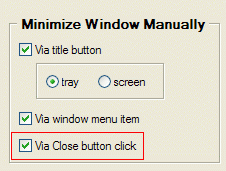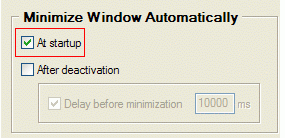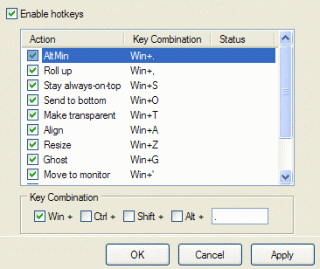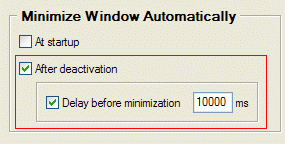Articles
Find The Best Way To Minimize Outlook Express To The Icon In The Tray
- Introduction
- 8 Ways to Minimize Outlook Express to the Icon in the Tray
- Conclusion
- Actual Window Manager Useful Links
Introduction
Outlook Express is an e-mail/news client that was included in versions of Microsoft® Windows from Windows 98 to Windows Vista (it has been renamed to Windows Mail in Vista). Millions of people use it every day at home and in their offices. It is a powerful and user-friendly application for your most common e-mail and business activities. Outlook Express is very popular because its contacts are very simple and convenient.
Way 1: New 'Minimize Alternatively' Title Button for Outlook Express
![]() Minimize Alternatively button is one of the several buttons you can add to any window's title bar using Actual Window Manager. The new button is as easy to use as the standard ones and with Actual Window Manager you can minimize Outlook Express to the system tray with a single mouse click.
Minimize Alternatively button is one of the several buttons you can add to any window's title bar using Actual Window Manager. The new button is as easy to use as the standard ones and with Actual Window Manager you can minimize Outlook Express to the system tray with a single mouse click.
With the help of Actual Window Manager you can also add new buttons e.g. ![]() Make Transparent,
Make Transparent, ![]() Stay Always-on-Top,
Stay Always-on-Top, ![]() Roll Up/Unroll,
Roll Up/Unroll, ![]() Send to Bottom and others. These buttons are very handy and make your window-handling chores much easier!
Send to Bottom and others. These buttons are very handy and make your window-handling chores much easier!
Way 2: Use the Standard 'Minimize' Button to Minimize Outlook Express to Tray

Actual Window Manager lets you minimize Outlook Express to the system tray using the standard (provided by Windows) Minimize button, if you wish. Just click on the Minimize button at the top of your e-mail client and it will be minimized not to the taskbar, but to the system tray. It is very convenient and you'll forget about taskbar clutter.
Way 3: Use the Standard 'Close' Button to Minimize Outlook Express to Tray
Actual Window Manager lets you also minimize Outlook Express to the system tray using the standard Close button, if you wish. The only thing you need to do is to simply tick in the related checkbox at the Minimizing property sheet:Way 4: Use 'Minimize Alternatively' Option in the Context Menu for Minimizing Outlook Express to Tray
You can also minimize Outlook Express by choosing the Minimize Alternatively (AltMin) option in the context menu which is accessible via the window icon. Of course, standard Windows® menu commands (Restore, Move, Size, Minimize, Maximize) are very handy but when we work with several applications simultaneously and need to manage many windows it is better to find an alternative application for organizing desktop space.

Way 5: Minimize Outlook Express to Any Place on Your Screen
Actual Window Manager offers a unique feature to minimize any program to a small icon which is placed on the screen. You can drag this icon anywhere on the screen and choose its position and size. If you then double-click it, the default action is to restore the normal window and remove the icon from the desktop/screen. Using this feature will help you to free the taskbar thus saving space for more urgent programs.

If you prefer to minimize applications to screen you may find it useful to control screen icon's behavior, there exist several Screen Icon Options:
- large mode makes the screen icon larger (large icons look better and they are much easier to find on the screen).
- keep on top mode enables you to keep the icon on top of other windows.
- permanent mode means that the icon will be visible all the time the window is present (does not matter it is opened or minimized).
Way 6: Minimize Outlook Express at Startup
If you want to minimize, by default, Outlook Express to the system tray when it starts, Actual Window Manager can do this, also! Just select it and Actual Window Manager will start Outlook Express as an icon in the system tray, ready to be maximized when you click on it.
Way 7: Minimize Outlook Express to Tray Using a Hotkey
With Actual Window Manager you do not need click your mouse every time you want to minimize window. Just set a key combination (Win+. for example) and minimize your windows by one keystroke combination!
Way 8: Minimize Outlook Express When It Is Deactivated.
You can also minimize Outlook Express at the moment when it becomes inactive. This option is very useful when you have an application that you regularly restore and minimize. Additionally to this you can choose the delay before minimization interval - the proper amount of milliseconds (positive integer value) to wait before the target window will be minimized.
Additionally you can define the exact tray icon behavior in the related Tray Icon Mode group. There are several options, like:
- toggle mode, which means that the Outlook Express icon will appear in the tray when the application is minimized and will disappear when it is restored to its normal size.
- permanent mode enables you to see the Outlook Express icon all the time its windows are present (does not matter whether Outlook Express is opened or minimized).
- no icon mode is the best choice for Outlook Express since it already has its own icon in the tray.
And that is not all! Just remember a situation when you close some windows absolutely accidentally thus unexpectedly losing urgent information. You know that in some programs such as in Microsoft Word or Excel, computer always asks you if you want to save changes or not. In case you've made a mistake you just refuse to close the window and go on working. What should you do to achieve this result in Outlook Express? Click the checkbox Prevent accidental close of window - Actual Window Manager will automatically remember this option and your attempts to close the certain window will be intercepted, independently on the way of your doing it (clicking the Close button or pressing Alt-F4 hotkey). Thanks to this extremely convenient feature you won't lose any information in Outlook Express.
Conclusion
In this article we illustrated only one feature of Actual Window Manager but it will help you to save your time and efforts when you work with several applications simultaneously. It has more than 40 productive tools which you can use to control every window on your screen:
- e-mail clients (Mozilla Thunderbird, Eudora, IncrediMail etc.);
- instant messengers (MSN/Windows Messenger, Yahoo Messenger etc.);
- media players (Windows Media Player, Winamp etc.);
- office tools (Notepad, Calculators, Adobe Acrobat Reader, Microsoft Word, Microsoft Excel, Adobe Photoshop, Corel Draw etc.);
- development tools (Microsoft Visual Studio, Borland Delphi etc.);
- offline browsers or FTP-clients;
- and many other kinds of programs
Interested? Want to see how Actual Window Manager works? Try it out! Actual Window Manager is simple to learn and use, and we think you will want to keep it once you see what it does for you!
Actual Window Manager Useful Links
See the following links that will be your guides in getting acquainted with Actual Window Manager:
- Download the fully-functional 60-days trial version of Actual Window Manager right now. It is completely free!
- Actual Window Manager Home – the official page where you can download or order the risk-free version and read what users say about Actual Window Manager.
- Actual Window Manager Help section – the full list of features available in Actual Window Manager.
- Here you can find the information on how to create specific settings for Outlook Express or any other window.
Check out our articles. You can find other ways for using new title buttons, transparency effect and other features available in Actual Window Manager that will make your work easier!

Virtual Desktops: Theory and Practice of Arranging Windows within the Multiple Logical Desktops
The well-known time-proved approach to window organization is finally available in Actual Tools.

How to make a window always stay on top with a single click
The Stay Always-on-Top feature brings the window to the top of the desktop and doesn't allow other windows to hide it.

Find the best way to minimize Outlook Express to the icon in tray
Just one click on Minimize To Tray title button and Outlook Express is minimized to the system tray. Just another click on tray icon and Outlook Express is restored and is ready to use again!

Microsoft Visual Studio 2010 with Multiple Monitor Software
Advantages of using Visual Studio 2010 in combination with Actual Multiple Monitors.
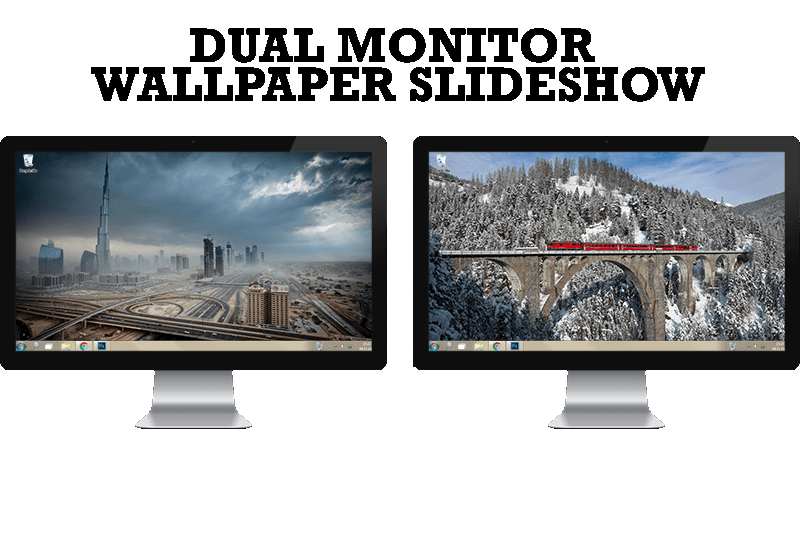
How to Set Up Dual Monitor Wallpapers Slideshow
Step by step guide to installing a slideshow mode on dual monitor.

Resize windows: Simplify your web construction with Resize Window
The Resize Window control will help you resize any window in a flash: Right click on it and you will access the drop-down list of window sizes including 640x480, 800x600, 1024x768, 100%x100%, 50%x50%, 0%x100%, etc.
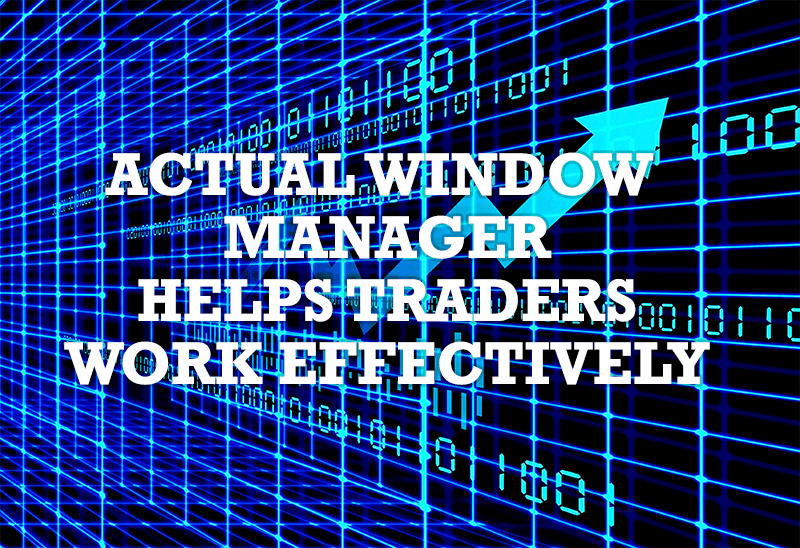
Actual Window Manager helps online stock and day traders work effectively
If you work with 8-10 applications, you are most likely to feel tired after an hour or two... This program is a complete solution for those who multitask in multiple applications simultaneously.
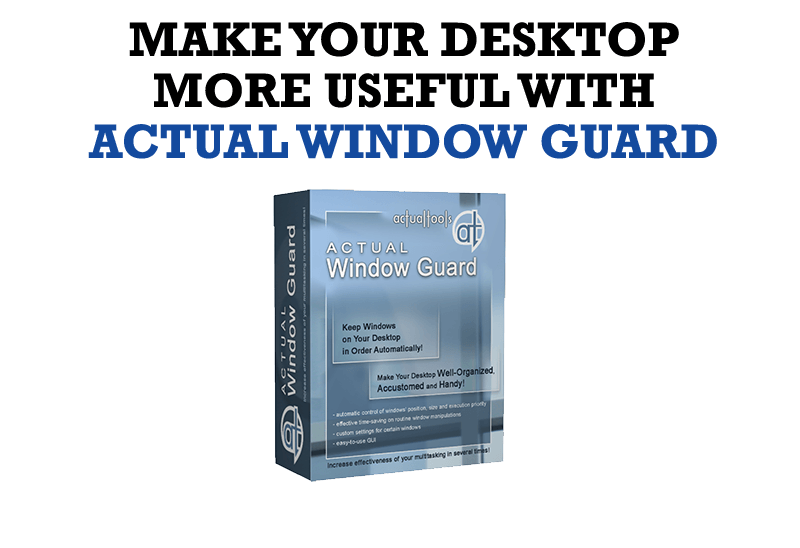
How to Make Your Desktop More Useful with Actual Window Guard
Best software to get full control of startup windows.

Run Multiple Monitor ScreenSaver on Desired Displays Only Automatically or by Pressing the Hotkey
Do you still turn off unused monitors manually? Use the new feature of Actual Multiple Monitors to run screensavers on unused displays automatically or by the hotkey combination.

Organize your desktop in a neat way!
Split your desktop into well-defined areas to keep your windows in a strict order.

